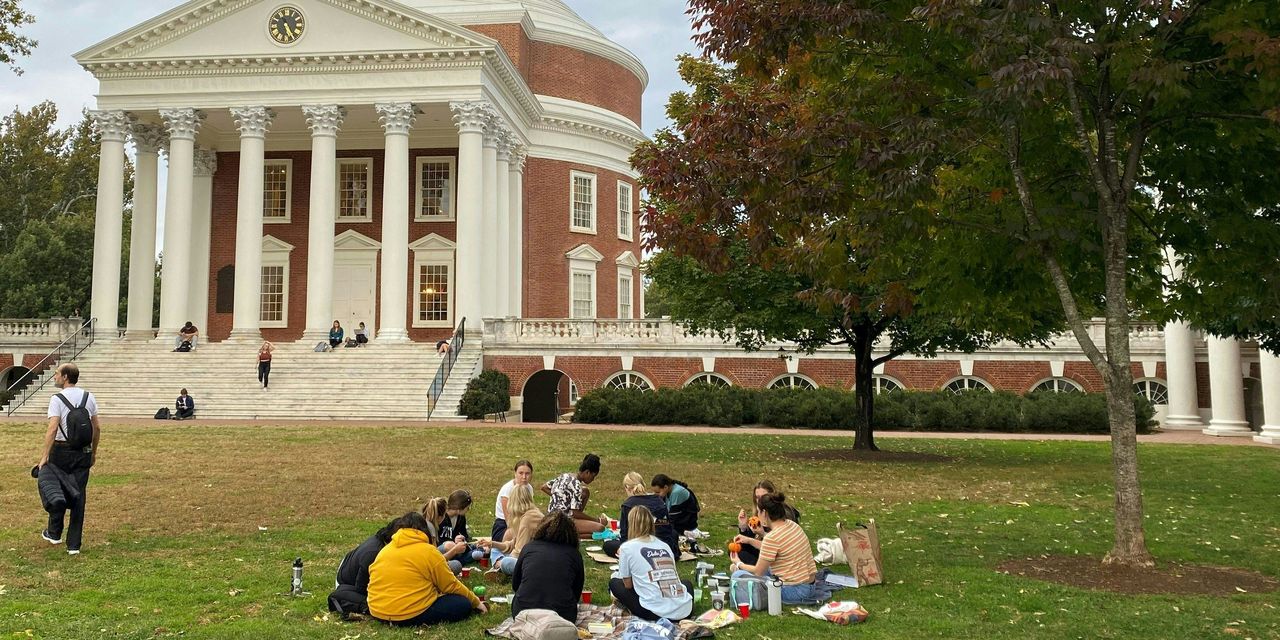Public attitudes on college are slipping, but America’s students apparently disagree, writes Stanley Litow.
Daxia Rojas/AFP/ Getty Images
About the author: Stanley Litow is Accenture professor of the practice at Duke University and a trustee at the State University of New York. He previously served as president of the IBM Foundation and is the co-author of Breaking Barriers: How P-Tech Schools Create a Pathway From High School to College to Career.
A recent Wall Street Journal Poll revealed a disturbing trend. Many Americans have lost faith in one of our most respected institutions—higher education. Most Americans have little confidence that their children will be better off in the future than they have been. Most have little belief in the importance of community service. And, no surprise, 56% of Americans have no confidence in the value of a four-year college degree.
This crisis of confidence in college education has grown significantly in the last decade. In 2013, the number having no confidence in the value of a college degree was about 40%. The general public is constantly hearing the narrative that “college doesn’t matter” from some corners of the media. It’s having an effect.
But new data on college applications shows something very different from the perspective of the most important client of colleges—the students themselves. Application data from the Common App released in March shows that college applications from potential students have risen 30% from the application year 2019-20 to 2022-23. For first-generation college-goers, applications increased by 36%. This represents a significant increase in numbers compared with pre-Covid enrollments.
Applications from international students also rose significantly—tripling in that same timeframe, with large increases in applications coming from students in China, India, Ghana, Nigeria, and Canada. The numbers show international students believe that attending college is a vital credential to compete in the global economy. The increase was also greater for applicants to public higher education institutions than private colleges, and the number of high school seniors setting up common app accounts increased by 26%.
So while general public attitudes may be moving in one direction, America’s students apparently disagree. Research shows that those who enter the workforce with a college degree versus those who enter the workforce with only a high school diploma are likely to earn over a million dollars more over their working lifetime.
College should be more affordable and accessible, and reforms are needed to connect college to career readiness. Still, the economic return on investment in postsecondary education is clear. It has enormous value to the individual and to broader society, given the tax benefit of increased income.
This is why the message delivered and policies agreed upon by a diverse array of key education stakeholders at the recent National Education Summit on Pathways is so important. I was honored to chair the summit.
Three hundred of America’s top leaders of all stripes convened on March 16 in Washington and focused attention on the need for a clear pathway for all students from the classroom, to college, to a career. Summit speakers included Secretary of Education Miguel Cardona; four Republican and Democratic governors; CEOs from major companies, including IBM and Gallup; labor leaders such as Randi Weingarten and Ernie Logan, representing America’s teachers and principals; and education leaders including State University of New York Chancellor John King and New York City Schools Chancellor David Banks, along with the CEO of Chicago’s schools, Pedro Martinez.
While these constituents often disagree on many things, including public education reform, issues like choice and charters, standards, and testing, they voiced strong agreement on the importance of the summit’s inclusive agenda and the need to take concrete action to implement it. In a survey of all 300 participants at the meeting’s end, 100% of them, representing leaders across stakeholder groups, said they would be anxious to work together to advance the Pathways agenda.
That agenda included a Summit Call To Action that outlines specific policy changes. Among them is making it more affordable and accessible for students in high school to take and pass college courses, increasing the likelihood they will enroll and complete college. It also calls for breaking down the silos and barriers that exist between high school and college by expanding Pell grant accessibility, and expanding the opportunity for students to be afforded experiential learning via paid internships that can help build workplace skills by allowing broader access to the Federal College Work Study program. It also urges the Labor Department’s apprenticeship program, which now has an average age of 28, to focus on younger students similar to the way apprenticeships are structured in Western European countries.
Education institutions at the high school and college level should be encouraged by the data showing an increased interest in applying to and enrolling in college. Leaders in the business community should also be encouraged, since the acquisition of education and workplace skills tied to degrees and credentials is directly connected to work readiness and career and economic success.
But none of those institutions, in education or business, should rest easy. To truly take advantage of the increase in applications, we all need to work together to better connect education to career success and line up behind the Call to Action and make it common practice. Our students deserve a better future. Providing it is in the interest of us all.
Guest commentaries like this one are written by authors outside the Barron’s and MarketWatch newsroom. They reflect the perspective and opinions of the authors. Submit commentary proposals and other feedback to [email protected].
Read the full article here










